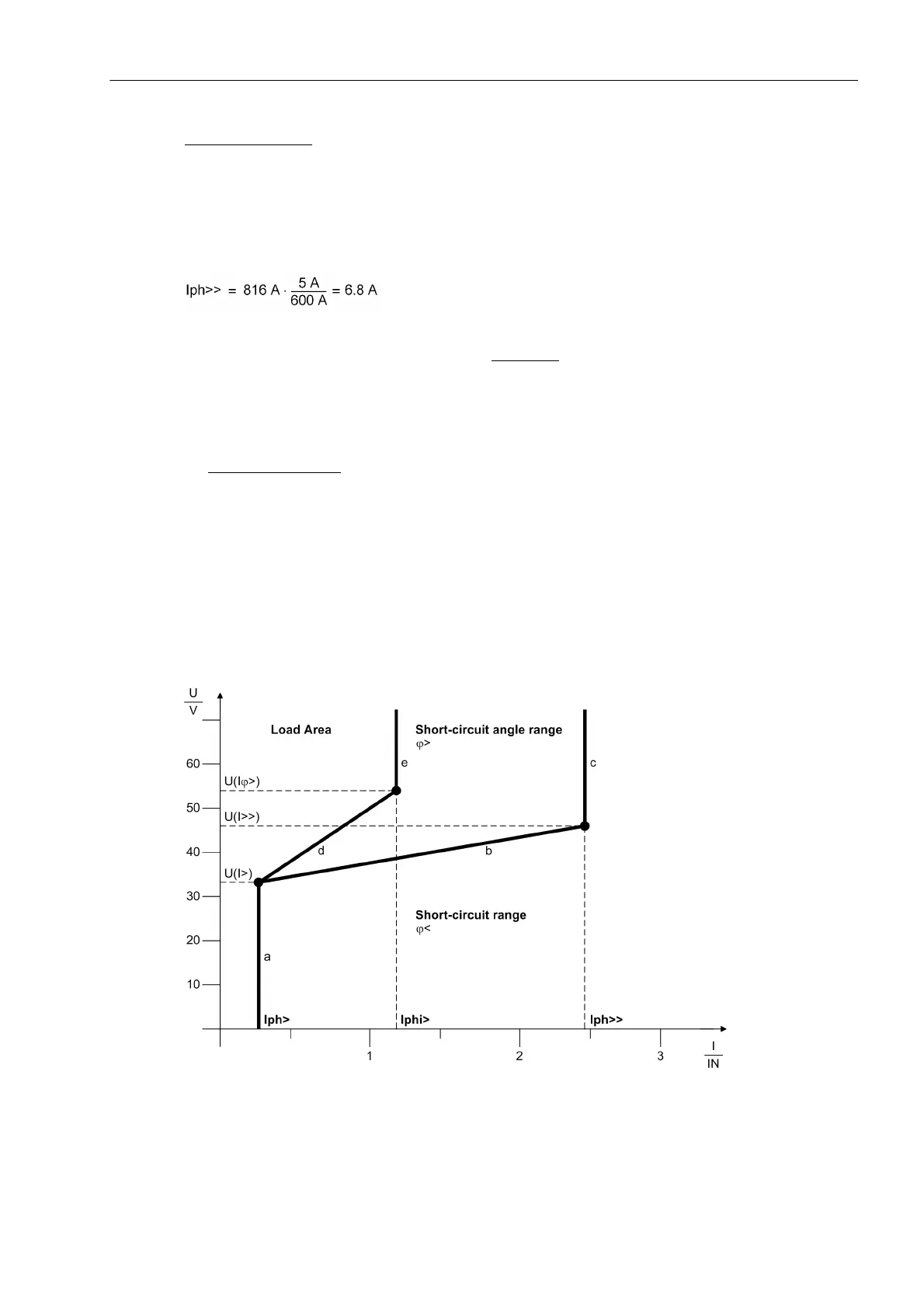Functions
2.5 Distance Protection
SIPROTEC, 7SD5, Manual
C53000-G1176-C169-5, Release date 02.2011
139
Calculation Example:
The maximum operational current (incl. overload) is 680°A, for current transformers 600°A/5°A, minimum short
circuit current is 1200°A. The following settings are made:
Iph>> = I
L max
· 1.2 = 680 A · 1.2 = 816 A
This value is sufficiently below the minimum short-circuit current of 1200 A. When configuring via PC and
DIGSI, this value can be entered directly as primary value. The conversion to secondary values is
The condition for minimum short-circuit current also applies to earth faults (in the earthed network) or to double
earth faults as long as overcurrent pickup is used exclusively
.
U/I(/ϕ) pickup
If U/I pickup is required because the minimum short-circuit current is below the maximum load current (incl. a
safety factor of 1.2), the condition for maximum load current in respect to Iph>> still has to be observed. Then,
the minimum current limit
Iph> (address 1911) is set to below the minimum short-circuit current (approx. 10
%). This also applies to the phase currents during earth faults or double earth faults.
At address 1930 1ph FAULTS you can select whether a phase-to-earth loop is selected in an earthed network
for single-phase pickup without earth current (I
E
release). The setting 1ph FAULTS = PHASE-EARTH is useful
if no or only little earth current can flow via the measuring point in the event of earth faults. With 1ph FAULTS
= PHASE-PHASEONLY the leading phase-phase loop is measured in the event of a single-phase pickup in the
earthed network. This parameter can only be altered with DIGSI under Additional Settings.
The meaning of the settings is illustrated in Figure 2-51. Iph> (section a, address 1911) is the minimum current
as described in the previous section, Iph>> (section c) is the overcurrent pickup.
Figure 2-51 Parameters of the U/I/ϕ pickup
